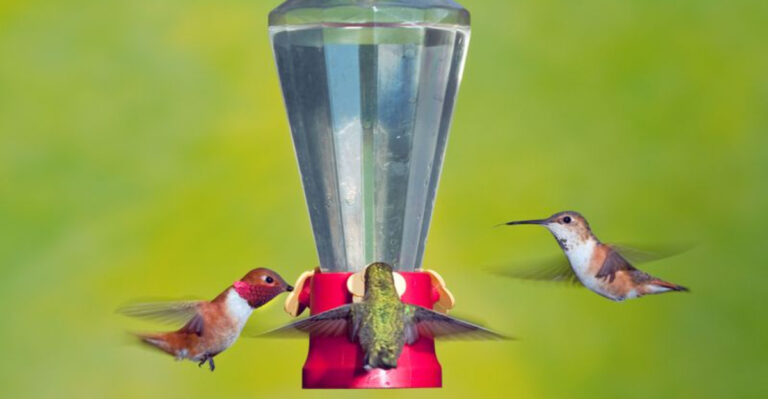15 Reasons Frogs Play A Crucial Role In Your Garden’s Health
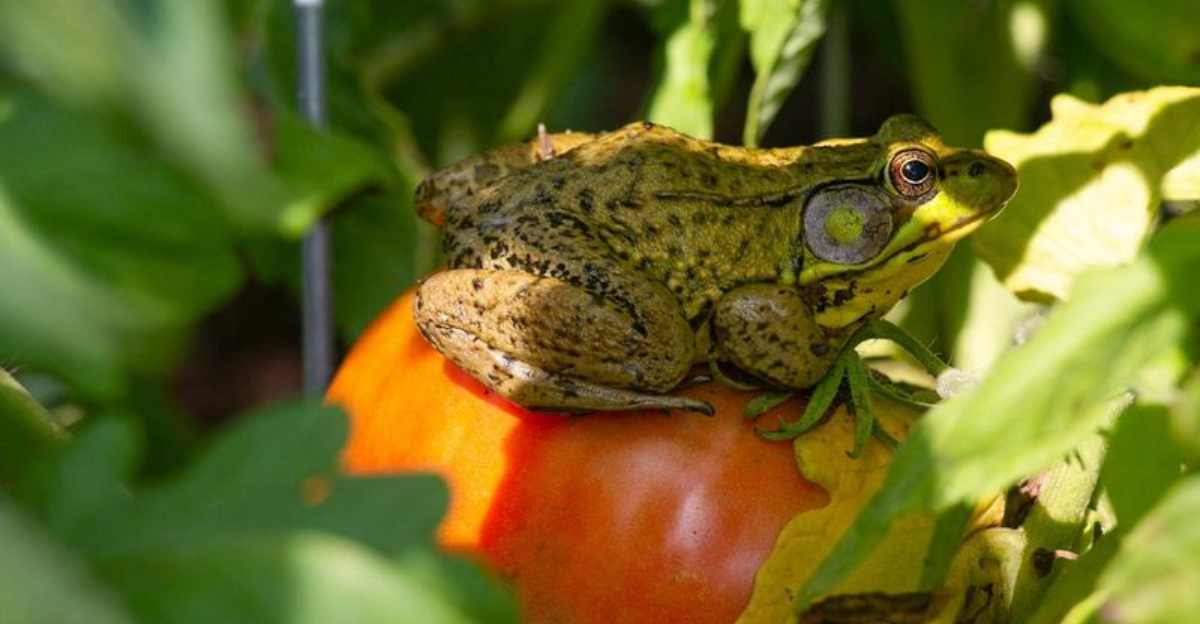
Have you ever noticed those small, hopping creatures in your garden? Frogs aren’t just fascinating to watch – they’re secret garden helpers working around the clock.
These amphibians contribute to your garden’s health in ways you might never have imagined. From pest control to soil enrichment, frogs offer benefits that make them worth welcoming into your outdoor space.
1. Natural Pest Controllers
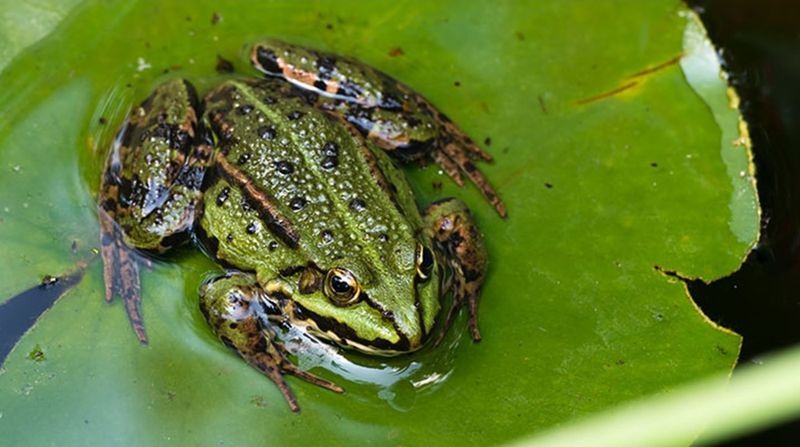
Frogs feast on pesky insects that damage your plants. A single frog can devour up to 100 insects every night, including mosquitoes, flies, and beetles that would otherwise munch on your precious garden. Their sticky tongues work like lightning-fast bug zappers, snatching insects mid-flight.
Garden pests don’t stand a chance against these hungry amphibians! Instead of reaching for chemical pesticides, consider frogs your free, environmentally friendly pest management team.
They work tirelessly while you sleep, keeping insect populations balanced without any toxic side effects.
2. Mosquito Munchers
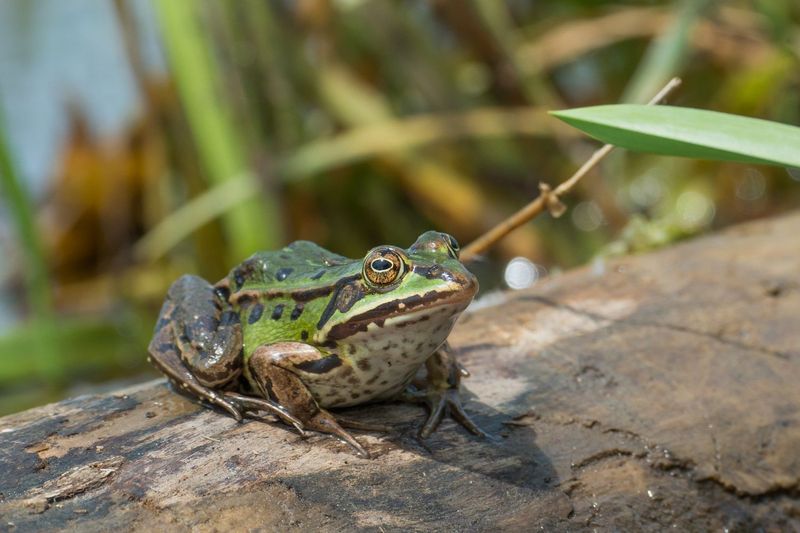
Gardens often become breeding grounds for mosquitoes, especially around water features. Adult frogs and their tadpoles consume mosquito larvae in water, dramatically reducing these biting pests before they can even develop wings.
One frog can eat thousands of mosquito larvae throughout the spring and summer months. This natural control method keeps your outdoor spaces more enjoyable without sprays or chemicals.
Fewer mosquitoes mean more comfortable gardening sessions and backyard gatherings. Your skin will thank you for having these mosquito-eating allies patrolling your garden ponds and water features!
3. Indicators Of Environmental Health
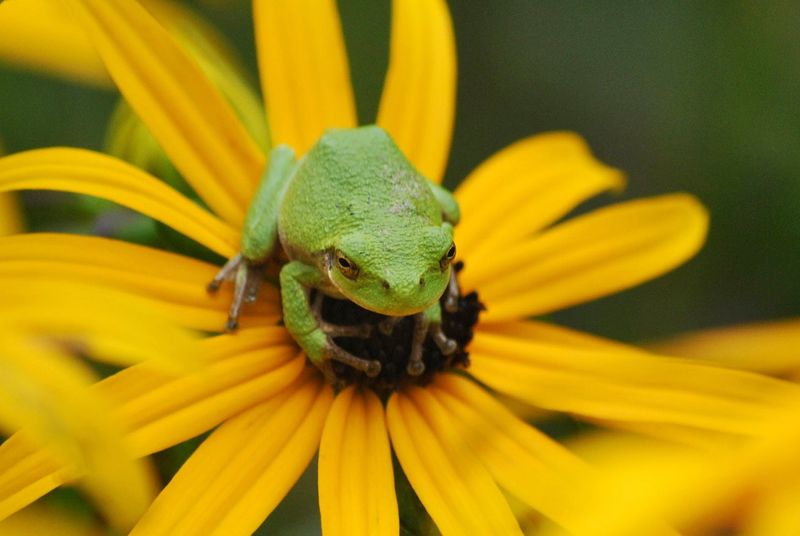
Frogs have permeable skin that absorbs substances from their surroundings, making them extremely sensitive to environmental changes. Their presence in your garden signals that your ecosystem is balanced and healthy.
When frogs disappear, it’s often the first warning sign of environmental problems like chemical contamination or habitat degradation. Scientists call them “bioindicators” because they’re like living environmental monitors.
A thriving frog population means your garden provides clean water, unpolluted soil, and a healthy balance of plants and insects.
Their chorus of croaks isn’t just pleasant evening music – it’s nature’s seal of approval for your gardening practices!
4. Soil Aerators And Fertilizers

As frogs hop and burrow through garden soil, they create small tunnels that improve air circulation and water penetration. Their constant movement prevents soil compaction, allowing plant roots to grow more freely and access nutrients more easily.
Frog waste enriches your soil with valuable nutrients. Their droppings contain nitrogen and phosphorus – key elements plants need for healthy growth and development. This natural fertilization happens continuously as frogs move through your garden hunting for food.
Unlike chemical fertilizers that need regular application, frog contributions come free of charge and in perfect doses that won’t burn plants or contaminate groundwater.
5. Balance In The Food Chain
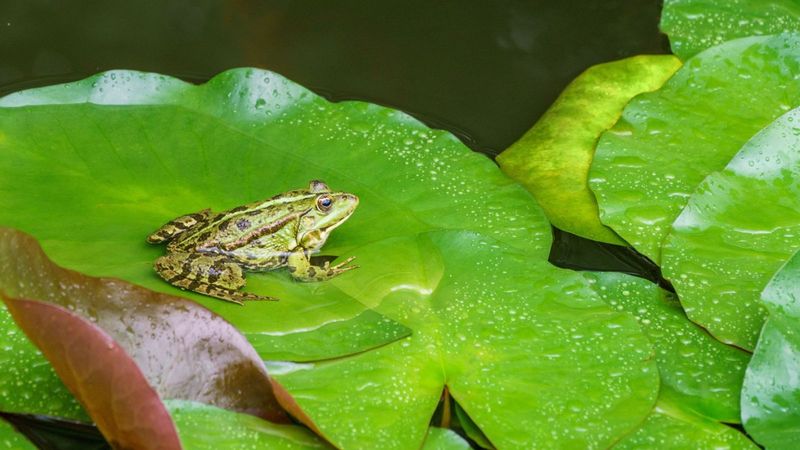
Frogs occupy a unique middle position in the garden food web. They control insect populations while also serving as food for birds, snakes, and other wildlife that visit your garden. This balancing act keeps any single species from becoming too dominant.
Without frogs, certain insects might explode in numbers while predators that rely on frogs might disappear. A healthy frog population attracts a diverse range of wildlife to your garden.
Encouraging this natural balance means fewer pest outbreaks and a more resilient garden ecosystem that can withstand environmental stresses like drought or disease.
6. Slug And Snail Patrol
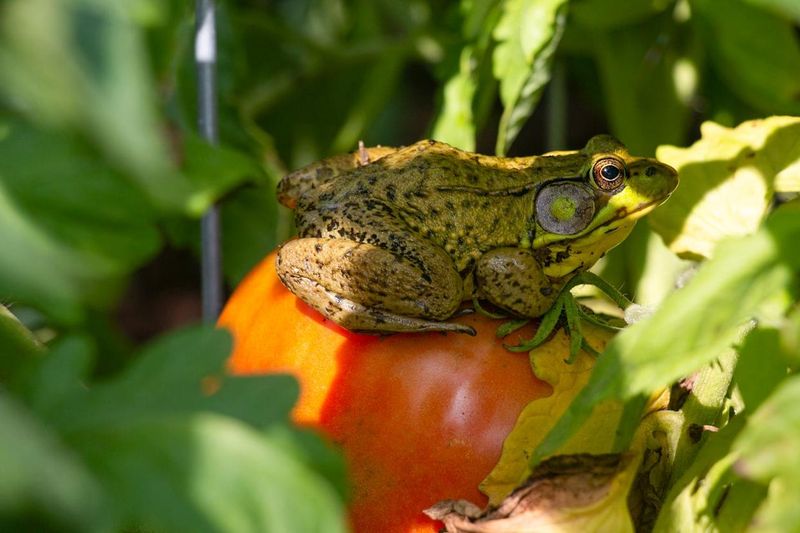
Gardeners often struggle with slugs and snails demolishing tender plants overnight. Frogs happily feast on these slimy pests, providing protection for your vulnerable seedlings and leafy vegetables.
Some frog species specifically target slugs and snails as preferred meals. Their hunting habits mean fewer holes in your hostas and less damage to your lettuce beds.
Unlike slug pellets that can harm pets and wildlife, frogs offer a completely safe alternative. They patrol your garden beds during humid evenings when slugs are most active, providing round-the-clock protection without any toxic residue or ongoing expense.
7. Water Feature Caretakers
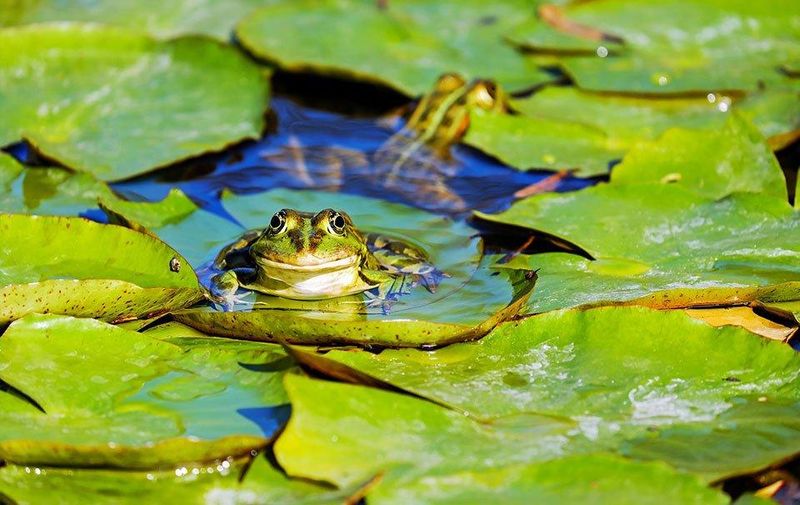
Garden ponds and water features benefit tremendously from frog residents. Tadpoles consume algae that would otherwise turn pond water green and murky, helping maintain clear water naturally.
Adult frogs eat insects that fall into the water, preventing them from decomposing and affecting water quality. This cleaning service keeps water features healthier with less maintenance required from you.
The movement of frogs in and out of water also helps circulate and aerate ponds. Better oxygenation supports beneficial bacteria that break down organic matter, creating a self-sustaining aquatic ecosystem that requires fewer chemical treatments and less frequent cleaning.
8. Weed Seed Consumers
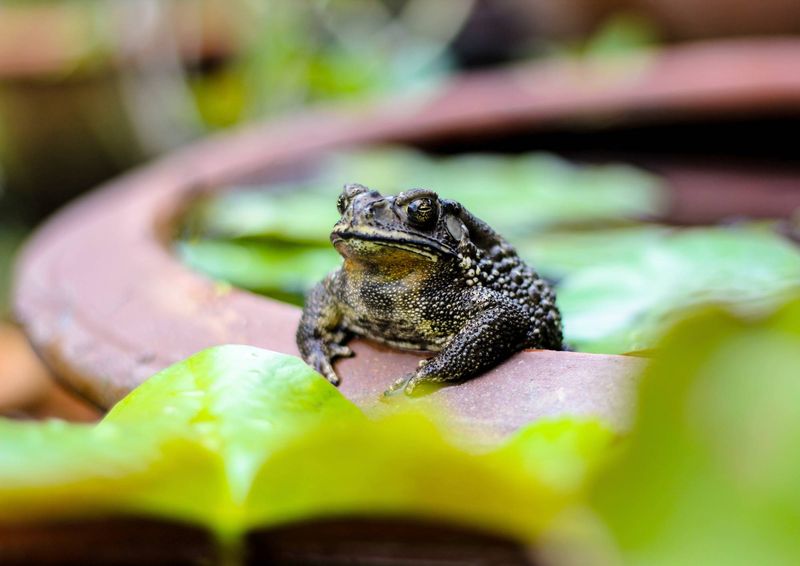
Many people don’t realize that frogs indirectly help control weeds in gardens. When frogs eat insects that would normally spread weed seeds, they interrupt the weed life cycle before it begins.
Certain beetles and ants are major distributors of weed seeds. Frogs consuming these insects prevent seeds from being carried to new areas of your garden. Less weed spread means less time spent pulling unwanted plants and more nutrients available for your desired garden specimens.
This invisible service happens quietly as frogs go about their nightly hunting, giving you more time to enjoy your garden rather than weeding it.
9. Nighttime Garden Guardians
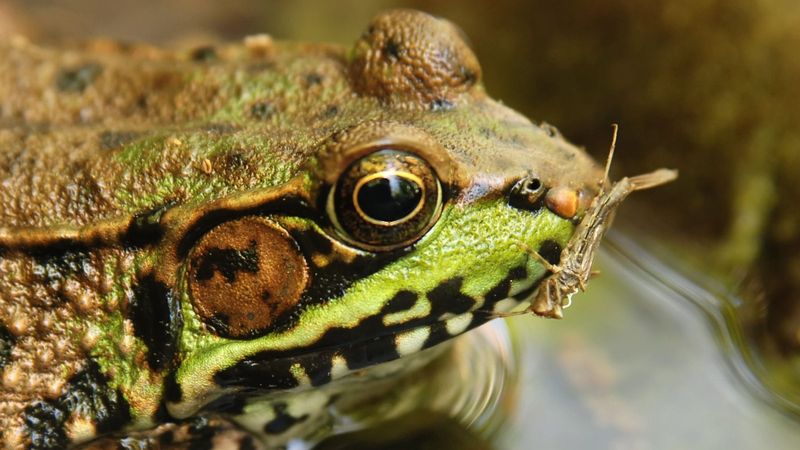
While you sleep, frogs take the night shift protecting your garden. Many destructive garden pests are nocturnal, emerging after dark to feast on your precious plants when you’re not watching.
Frogs are perfectly adapted for nighttime hunting with excellent vision in low light and incredible hearing that detects the slightest insect movement.
Their ambush hunting style is particularly effective against moths, beetles, and other night-flying insects that lay eggs on garden plants.
This round-the-clock protection means fewer pest eggs being laid and fewer larvae hatching to damage your plants. Morning garden inspections often reveal far less damage in gardens with healthy frog populations.
10. Early Warning System

Frogs have remarkably sensitive skin that reacts quickly to environmental changes. If they suddenly disappear from your garden, it might indicate problems with water quality, soil contamination, or harmful pesticide drift.
Their breeding patterns also signal seasonal changes. When you hear the first spring peepers, it’s nature’s way of announcing that soil temperatures are warming and planting season is approaching.
Paying attention to frog activity provides valuable gardening insights without checking calendars or soil thermometers.
Their behavior can warn you about environmental stresses before plants show visible symptoms, giving you time to address issues before they affect your garden’s health.
11. Pollinator Protectors
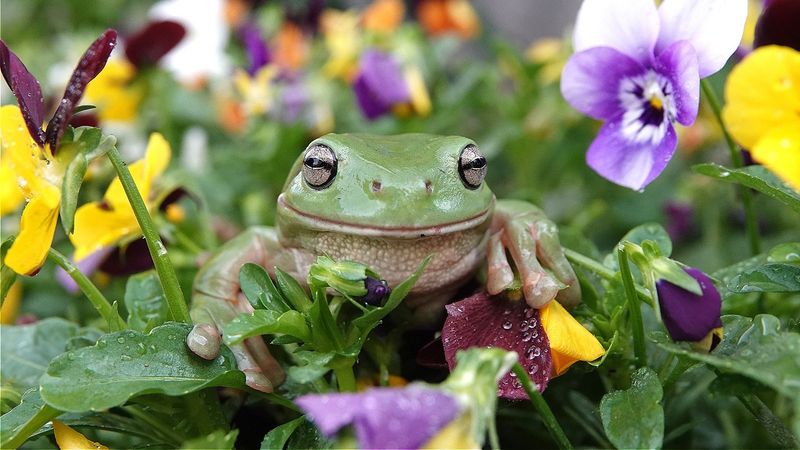
Your garden’s flowering plants depend on pollinators like bees and butterflies. Frogs help protect these essential garden visitors by controlling wasps and predatory insects that would otherwise attack pollinators.
Hornets and certain wasp species prey on bees and butterflies. Frogs keep these predator populations in check, creating safer conditions for beneficial pollinators to visit your flowers.
More successful pollination leads to better fruit set and seed production in your garden. The relationship between frogs, pollinators, and flowering plants demonstrates how interconnected a healthy garden ecosystem truly is – remove one element, and the others suffer.
12. Teach Garden Ecosystems

Frogs offer wonderful educational opportunities, especially for children. Observing their fascinating life cycle – from egg to tadpole to frog – creates memorable lessons about nature, biology, and environmental stewardship.
Children who watch frogs develop a deeper understanding of how garden ecosystems function. These hands-on experiences foster appreciation for wildlife and often inspire lifelong environmental awareness.
Family gardening becomes more engaging when searching for frog eggs or watching tadpoles develop. These magical moments connect children with nature in ways that screens and books cannot, creating future generations of gardeners who understand the importance of balanced ecosystems.
13. Reduce Garden Chemicals
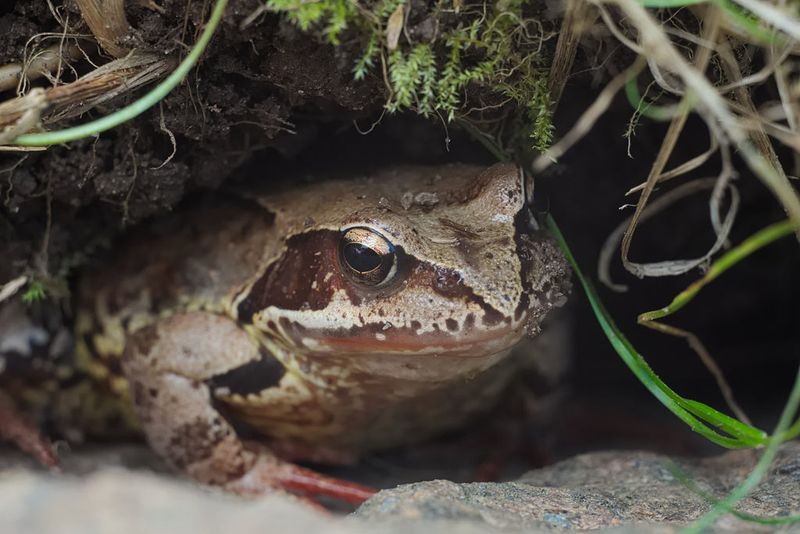
Gardens with healthy frog populations naturally require fewer chemical interventions. When frogs handle pest control, gardeners can reduce or eliminate insecticide use, creating healthier environments for everyone.
Chemical-free gardening protects beneficial insects like bees while also producing safer fruits and vegetables. Your produce will be free from pesticide residues that might otherwise end up on your dinner table.
Frogs essentially offer free organic pest management services. The money saved on chemical treatments can go toward garden improvements or special plants you’ve been wanting to try, making frog-friendly gardening both environmentally and economically smart.
14. Compost Pile Assistants

Compost piles often attract frogs seeking moisture and insect meals. Their presence accelerates decomposition by controlling pests that might otherwise damage the beneficial decomposer organisms.
Frogs prevent flies from laying eggs in compost materials, reducing potential odor problems and fly populations.
They also consume insects that might carry plant diseases, helping keep your compost healthier. The resulting compost tends to be more balanced and nutrient-rich.
When spread in your garden, this frog-enhanced compost provides perfect growing conditions for plants while improving soil structure and water retention capabilities.
15. Garden Ambiance Enhancers
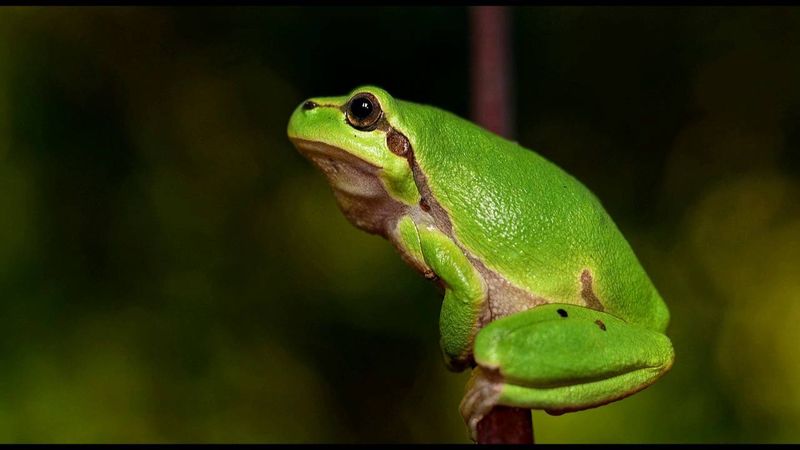
Evening frog choruses create magical garden atmospheres that connect us with nature’s rhythms. Their calls signal seasonal changes and weather patterns, adding another sensory dimension to garden enjoyment.
Different frog species produce unique calls, creating a living soundscape that changes throughout the year. Many gardeners find these natural sounds deeply relaxing after busy days.
Beyond their practical benefits, frogs bring wonder and joy to garden spaces. Spotting a tiny tree frog resting on a leaf or watching tadpoles develop in a pond creates memorable moments that transform ordinary gardens into extraordinary natural sanctuaries where both plants and wildlife thrive together.





